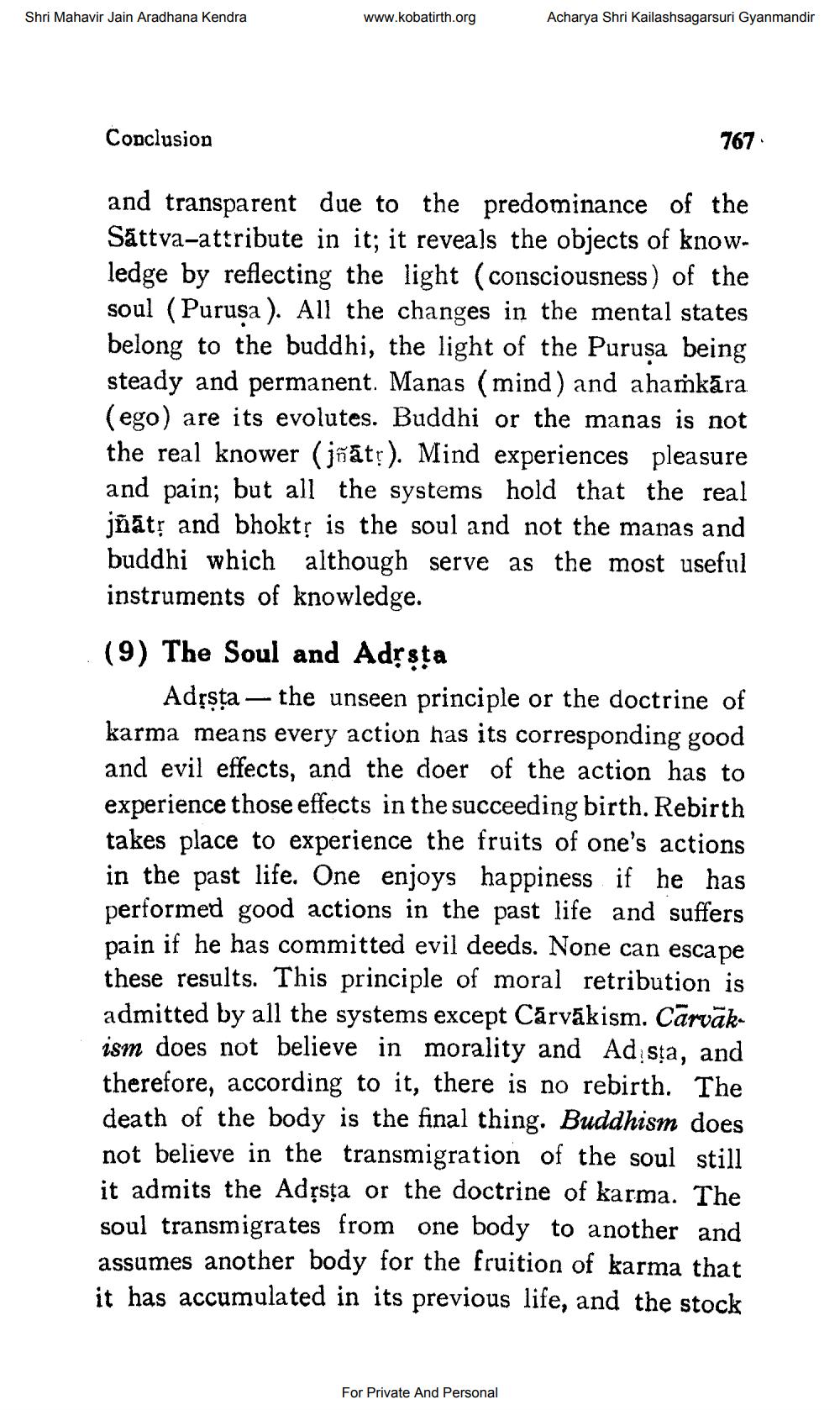________________
Shri Mahavir Jain Aradhana Kendra
www.kobatirth.org
Acharya Shri Kailashsagarsuri Gyanmandir
Conclusion
767
and transparent due to the predominance of the Sättva-attribute in it; it reveals the objects of knowledge by reflecting the light (consciousness) of the soul (Purusa). All the changes in the mental states belong to the buddhi, the light of the Purusa being steady and permanent. Manas (mind) and ahamkāra (ego) are its evolutes. Buddhi or the manas is not the real knower (jñāt;). Mind experiences pleasure and pain; but all the systems hold that the real jñātņ and bhoktis the soul and not the manas and buddhi which although serve as the most useful instruments of knowledge.
(9) The Soul and Adřsta
Adựşța — the unseen principle or the doctrine of karma means every action has its corresponding good and evil effects, and the doer of the action has to experience those effects in the succeeding birth. Rebirth takes place to experience the fruits of one's actions in the past life. One enjoys happiness if he has performed good actions in the past life and suffers pain if he has committed evil deeds. None can escape these results. This principle of moral retribution is admitted by all the systems except Cárvákism. Carvākism does not believe in morality and Ad sța, and therefore, according to it, there is no rebirth. The death of the body is the final thing. Buddhism does not believe in the transmigration of the soul still it admits the Adrsța or the doctrine of karma. The soul transmigrates from one body to another and assumes another body for the fruition of karma that it has accumulated in its previous life, and the stock
For Private And Personal




